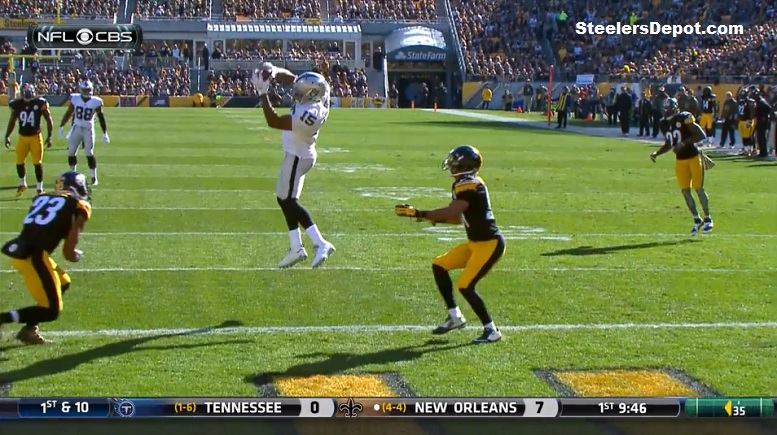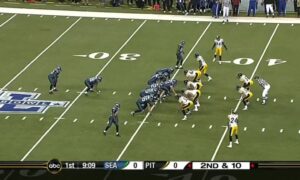Though the Pittsburgh Steelers defense, like the majority of the NFL, has continued to give up significant yardage through the air—the fact that 374 of their total 2784 yards allowed through the air came Sunday from Johnny Manziel doesn’t help—the sheer yardage total is less important than taking a big picture look at the performance.
In advance of last night’s game, the league as a whole has given up 70392 yards in the air in 291 games played, which means, in an average NFL game, an opposing defense will give up 242 yards through the air, no matter who is at quarterback or what defense is on the field.
In this category, and in light of some major yardage totals given up over the course of the past several games, the Steelers are in fact below average. They currently rank 27th in the league, giving up 278.4 yards through the air per game.
Though their 7.5 yards allowed per pass attempt is middling in comparison to league averages, as is their touchdowns allowed per game at 1.7, they also give up the third-highest rate of first-down passes in the league, where 37.9 pass attempts result in a new set of downs.
But their 31 explosive passing plays allowed ranks 17th, and when you factor in the fact that they have one more game played than most, their percentage of explosive plays allowed per game actually shoots up all the way to eighth-best.
The defense’s quarterback rating against of 94 is, again, decidedly middling, the 14th-highest in the league—but so, too, is at long last their interception total. And their sack numbers are finally back to above average.
No, this is not your father’s defense, nor is it Dick LeBeau’s. LeBeau every year aspired to allow no more than 5.7 yards per pass attempt—the only teams remotely close to that are the Panthers and Broncos—but what it is, or what it is aspiring to become, is one that not only better complements this offense, but is simply more realistic.
Realistic not just in light of the way that the game is played today, and under today’s rules, but in light of the level of talent available on the roster, and where that talent is situated. The Steelers use a rotation at outside linebacker, for instance, because they have no superstars there, yet just a couple of games ago their defensive ends played every single snap.
The defense under Keith Butler is certainly giving up plenty of yards through the air, without question, but he wants opponents to throw the ball—and they are. The Steelers have seen 39.3 pass attempts per game this year, the sixth-highest number in the league.
That has translated into 17 touchdowns, 7.5 yards per attempt, and nearly 280 yards per game. But it has also translated into nearly three sacks and an interception per game, one of which was turned into a touchdown, a handful of others robbing the offense in the red zone. This is not an overly talented unit, especially in defending the pass, but it has adapted into being an opportunistic one.








